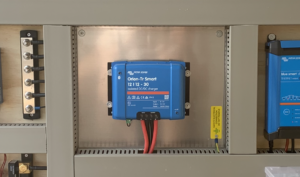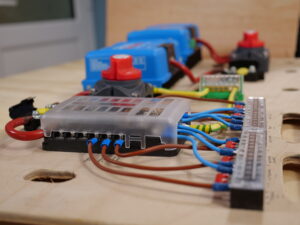Solar Charge Controllers – Everything you need to know.
last updated: Feb 20, 2024
If you’re planning to take your campervan on a road trip, one of the essential components you should consider is a solar charge controller. Solar panels can provide you with the power you need to run your appliances and devices, but without a charge controller, you could risk damaging your batteries.
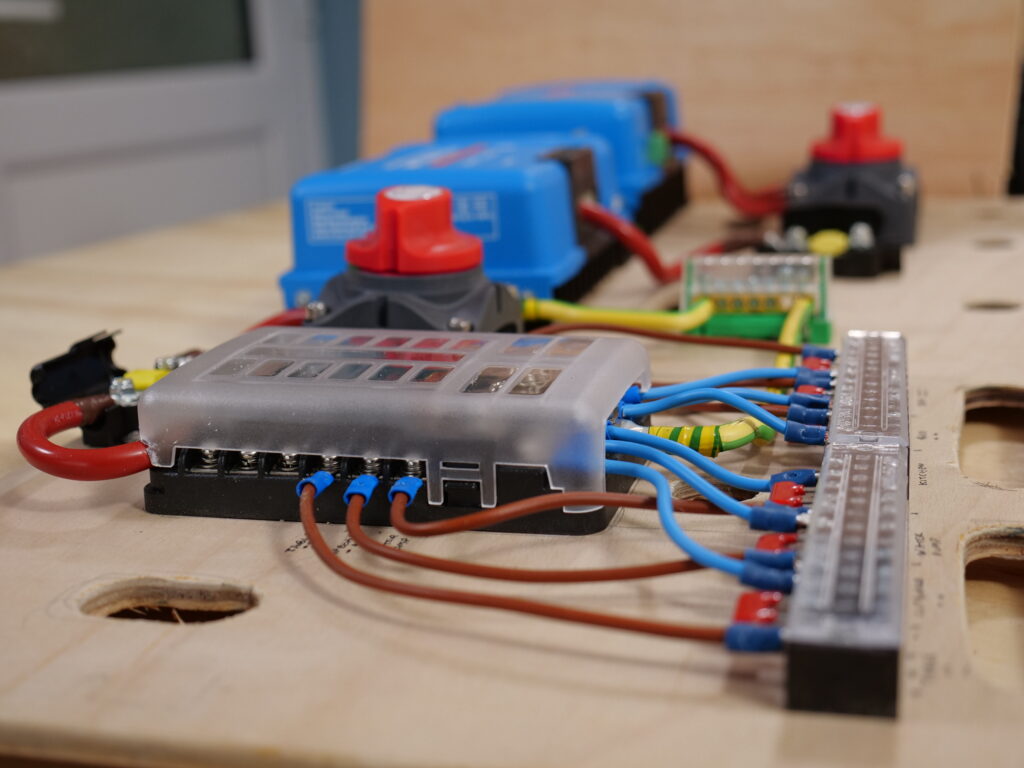
What is a Solar Charge Controller?
A solar charge controller is an electronic device that regulates the amount of current flowing from your solar panels to your batteries. It acts as a middleman, ensuring that your batteries receive a safe amount of charge current and preventing any overcharging.
Types of Solar Charge Controllers
There are two main types of solar charge controllers used commonly in campervan electrical installations: PWM (Pulse Width Modulation) and MPPT (Maximum Power Point Tracking).
PWM controllers are the most basic and affordable type of solar charge controller. They regulate the voltage of the solar panels by pulsing the current on and off. However, they are not as efficient as MPPT controllers, especially when the temperature is high or when the panels are partially shaded. We do not recommend this type of solar charge controller. They are outdated and due to the advancement in battery technology, the batteries now require more advanced charge algorithms to maintain healthy cycles.
MPPT controllers, on the other hand, are more advanced and efficient. They use a smart algorithm to track the maximum power point of the solar panels and convert it into the optimal voltage for the batteries. This means that they can extract more power from your solar panels, especially in low-light conditions or when the temperature is high.
Another benefit to the MPPT controller is that they offer a three-stage charge algorithm which can be adjusted to suit your specific battery type. These three stages are Bulk, Absorption and Float. The bulk stage maximises everything the controller can muster from the solar array and gives the batteries the best possible charge current. The second stage, absorption, begins to tail the charge current off and slow the charging process down. The third stage is float, this stage is the final stage before the batteries reach 100% state of charge. It tops off the charge and remains like this until the battery voltage drops and they require a charge.
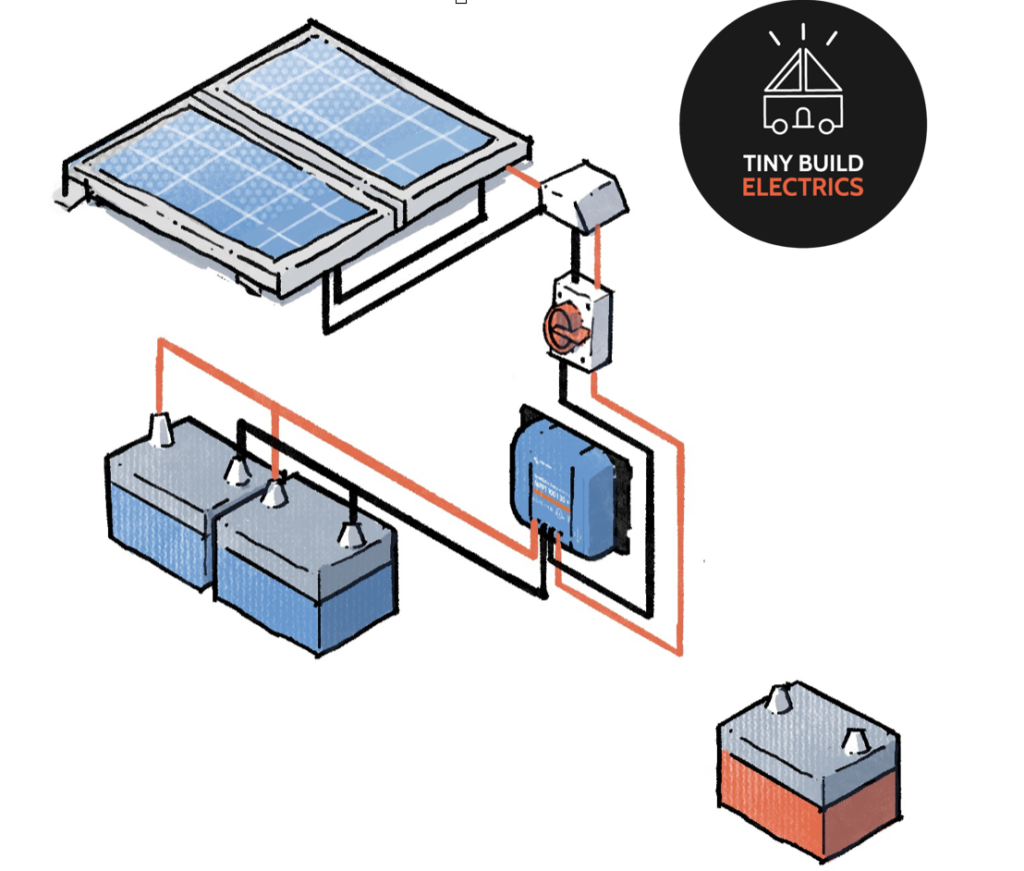
Different types of batteries require different lengths and strengths of charging. Typically you need to check the manufacturer’s instructions supplied with the batteries and adjust the parameters of the controller to suit.
Why are Solar Charge Controllers Important for Campervans?
If you’re planning on relying on solar panels to keep your batteries charged while on the road, you need to ensure that the power being created by the solar panels is regulated and ready for the batteries. Without a solar charge controller, you could risk damaging your batteries, shortening their lifespan, and even starting a fire.
In addition, a solar charge controller can help you get the most out of your solar panels. By regulating the charge flowing from your panels to your batteries, you can ensure that you’re maximising your power output and charging your batteries as efficiently as possible.
Protecting the batteries: Solar charge controllers help protect campervan batteries from overcharging, which can damage them and reduce their lifespan. When the batteries are fully charged, the charge controller will stop sending power from the solar panels to the batteries, preventing overcharging.
Optimising power output: Solar charge controllers help optimise the power output of the solar panels by regulating the voltage and current that flows to the batteries. This ensures that the batteries receive the right amount of power, which can increase their efficiency and reduce the charging time.
Monitoring system performance: Some solar charge controllers have built-in monitoring systems that can help you keep track of your power usage and the performance of your solar panels. This can help you optimize your energy usage and make sure that your system is working as it should.
Increasing battery life: By regulating the charging process and preventing overcharging, solar charge controllers can help extend the lifespan of your campervan batteries. This can save you money in the long run by reducing the need for battery replacements.
How to choose the correct size Solar Charge Controller for your Campervan
To correctly size a solar charge controller, you need to consider the following factors:
- Solar Panel Voltage: The controller should be rated for the maximum voltage of your solar panel array. Make sure to select a controller with a voltage rating that is higher than the maximum voltage of your solar panels.
- Solar Panel Current: The controller should also be rated for the maximum current of your solar panel array. Make sure to select a controller with a current rating that is higher than the maximum current of your solar panels.
- System Voltage: The controller should be able to handle the voltage of your battery bank. Make sure to select a controller with a voltage rating that matches your battery bank voltage.
- Power Rating: The controller should have a power rating that is sufficient for your system. To determine the power rating, multiply the maximum voltage of your solar panels by the maximum current of your solar panels. This will give you the maximum power output of your solar panel array. Make sure to select an MPPT controller with a power rating that is higher than the maximum power output of your solar panel array.
- Operating Temperature: The controller should be able to operate in the temperature range that your system will be exposed to. Make sure to select a controller with an operating temperature range that matches the worst-case climates that you plan to travel too.
Once you have considered these factors, you should select an MPPT controller that meets or exceeds your system’s requirements. If you are unsure about any of these factors, book in for a consultation below and we will be more than happy to help!
Where to install a Solar Charge Controller?
When installing your Solar Charge Controller there are a few key pointers worth noting. Ensure the device is installed in a way to maximises heat dissipation. This could be by fitting it in a well-ventilated area, fitting it to a metal backplate, or ensuring there is a fan blowing cool air into your electrical compartment.
The reason heat dissipation is important is because if the device gets too hot it will reduce its charge output and will not work efficiently, leaving you with less power yield from your solar panels.
Why do many builders use Victron MPPT Controllers?
Those seemingly ubiquitous blue boxes you see in van conversion videos and photos are typically Victron. Likewise, in my latest van, I installed Victron for my key electrical components (B2B Charger, Solar Charge Controller and Inverter). Why? In general, for van conversions, among other off-grid needs, Victron Energy is one of the leading manufacturers in the industry. They are not the cheapest, but when it comes to electrical kits like this—you largely pay for what you get.
In general, compared to cheaper components, Victron offers;
High Efficiency: One of the key benefits of using a Victron Energy MPPT controller is that it can increase the efficiency of your solar panels. In general, MPPT controllers can harvest more energy from the panels than other types of controllers, and Victron produces some of the most efficient on the market.
Durability: Victron kit is built to last. They are made with high-quality components and are designed to withstand harsh environmental conditions. It is very annoying to have a central component break down while you are on the road and, depending on where you are, it can take quite some time to obtain replacement components.
Easy to use: Despite their advanced technology, Victron controllers are also user-friendly. They come with easy-to-understand displays and can be set up quickly and easily. They also come with the possibility of remote monitoring. This means that you can keep track of your solar power system from anywhere in the world, which is particularly useful for off-grid installations.
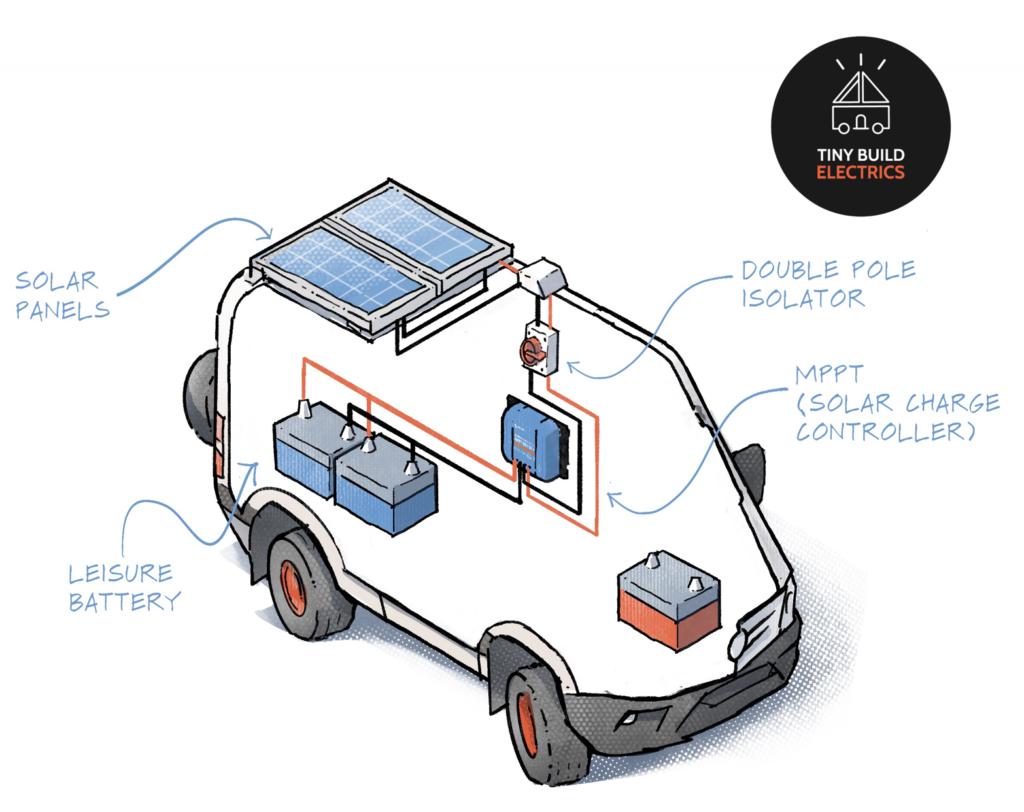
Build your own adventure
The guide anyone can use to convert a van into a camper! With over $350 worth of savings inside
Do you want to live vanlife at zero cost?
Nate Murphy knows how to buy vans, convert them quickly and efficiently - use them for years - and then sell them for a profit. This can make vanlife not just free, but profitable!
He has successfully done this for years and he teaches his friends and students to do exactly the same. It is not obvious, but anyone can do it if they have the knowledge!
Join Nate at his free online training (running today) and he will teach you exactly how he does this!

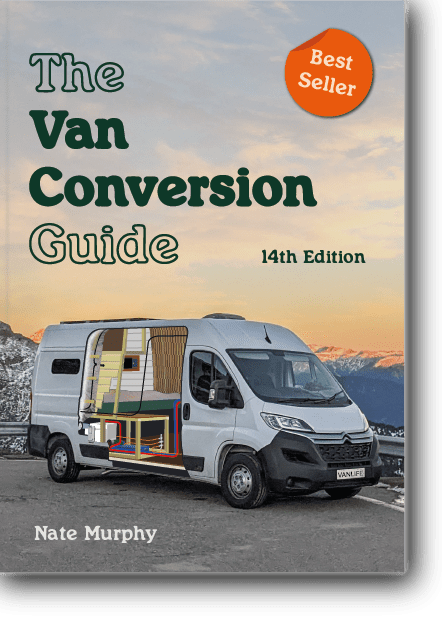
The Van Conversion Guide (14th Edition)
The guide anyone can use to convert a van into a camper! This best-selling guide, now in its 14th Edition, has been used by thousands of people to transform a van into a camper.
- 150+ page eBook
- Helps you convert any kind of van
- Diagrams for all the main systems
- FREE mini-course - 28 video tutorials
